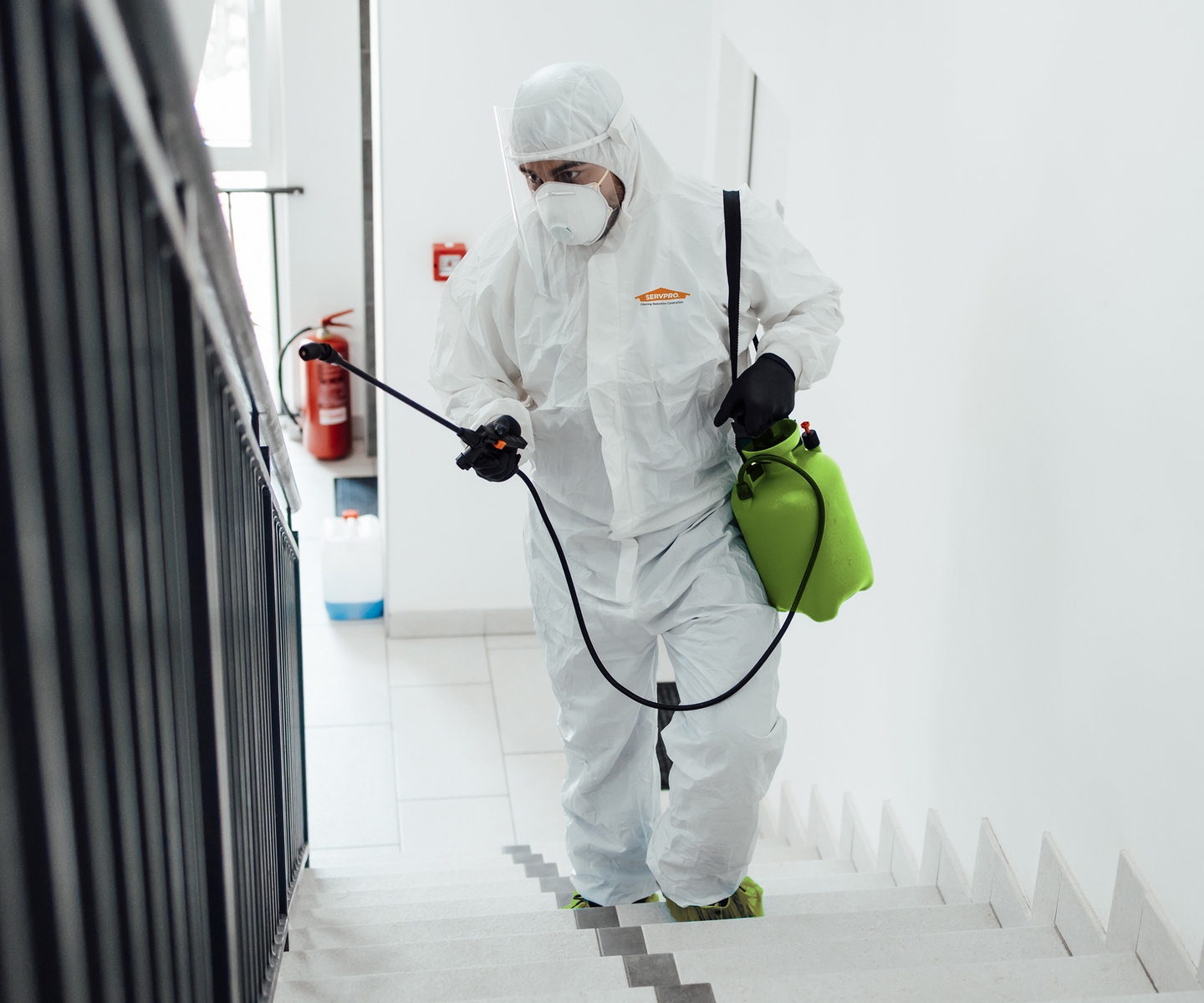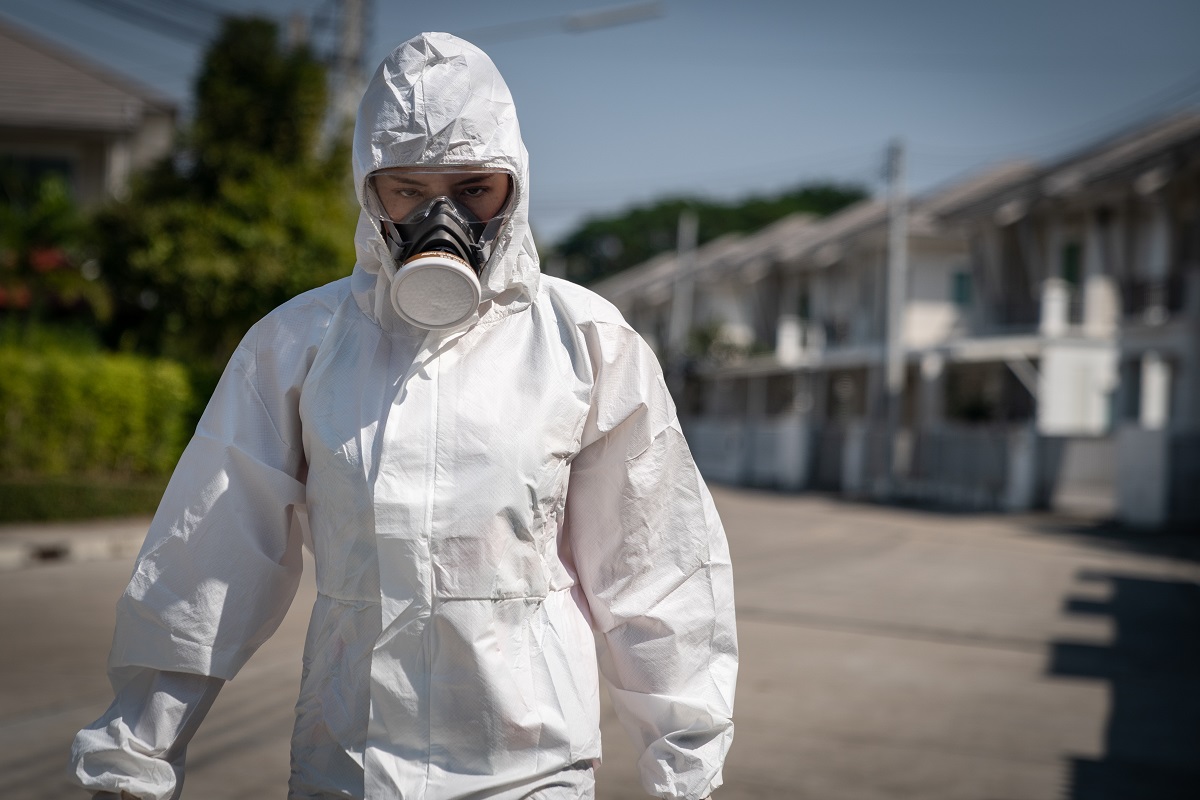Clandestine Lab Cleanup: Comprehensive Decontamination for Hazardous Sites
Clandestine Lab Cleanup: Comprehensive Decontamination for Hazardous Sites
Blog Article
Expert Biohazard Cleaning and Purification for Blood, Bodily Fluids, and Hazardous Materials
The potential health and wellness threats associated with exposure to biohazards emphasize the vital demand for meticulous handling and extensive cleaning. As we navigate the complex landscape of biohazard cleanup, comprehending the subtleties of regulations, compliance, and the specific tools at play becomes necessary in guaranteeing a secure and comprehensive decontamination procedure.
Wellness Risks of Biohazard Direct Exposure
Direct exposure to biohazards positions substantial health dangers that can cause severe consequences for areas and individuals alike. Biohazards encompass a broad variety of biological compounds, including blood, physical fluids, mold, germs, viruses, and other potentially contagious materials. When individuals enter into contact with these biohazards, whether with crashes, incorrect handling, or ecological exposure, they encounter the risk of contracting major diseases or conditions.
Among the key wellness threats related to biohazard direct exposure is the transmission of contagious conditions. Bloodborne pathogens such as HIV, hepatitis B and C, and various microorganisms can be existing in biohazardous materials, presenting a direct threat to human wellness. Breathing in airborne biohazards like mold spores or entering into call with polluted surfaces can additionally cause breathing problems, allergies, and various other unfavorable health results.
Furthermore, biohazard direct exposure can have lasting health and wellness implications, with some conditions showing up years after the preliminary contact (Blood Cleanup). Therefore, it is essential to prioritize correct biohazard cleansing and decontamination to mitigate these wellness threats and make sure the safety and security of communities and people

Specialized Educating for Biohazard Cleanup
When it comes to taking care of biohazard clean-up effectively and safely, specialized training plays an essential function in ensuring appropriate decontamination treatments are adhered to. Biohazard cleanup requires certain expertise and abilities to effectively reduce dangers linked with bloodborne pathogens, bodily fluids, and dangerous products. Experts learnt biohazard cleaning undertake strenuous instruction on how to safely manage, eliminate, and throw away biohazardous products to stop contamination and exposure.
Specialized training for biohazard clean-up covers an array of important topics, including proper individual safety tools (PPE) use, bloodborne virus recognition, purification strategies, and harmful waste disposal methods. People learnt biohazard clean-up are furnished with the needed proficiency to assess contamination levels, identify possible dangers, and apply proper clean-up procedures in compliance with regulatory standards.
Constant training and education are vital in the area of biohazard clean-up to stay updated on the current purification innovations, security procedures, and guidelines. By spending in specialized training, biohazard clean-up professionals can effectively react to emergency situation cleanup situations and guard both public health and wellness and the environment.
Importance of Correct Decontamination Techniques
Making use of appropriate decontamination strategies is important in biohazard cleanup to properly get rid of hazardous products and lessen wellness risks. Efficient purification not just ensures the elimination of visible traces of blood, physical fluids, and various other biohazards yet additionally targets undetectable microorganisms that may posture serious health and wellness threats otherwise effectively removed. By complying with stringent purification protocols, trained specialists can dramatically decrease the threat of exposure to dangerous bacteria, infections, and microorganisms that might lead to illness or infections.
Appropriate decontamination techniques include making use of specific equipment and anti-bacterials that are specifically developed to neutralize biohazards successfully. Detailed cleansing and disinfection of polluted locations are important to protect against the spread of virus and make certain a risk-free setting for occupants. In addition, the correct disposal of biohazardous waste adhering to purification procedures is crucial in avoiding contamination of various other surface areas or individuals.

Tools and Devices for Safe Clean-up
When dealing with blood, physical liquids, or harmful materials, find more info biohazard cleaning experts rely on specialized gear to decrease direct exposure risks and extensively decontaminate the affected location. In addition, biohazard cleansing packages including disinfectants, absorbent materials, and biohazard bags are utilized to safely dispose and have of polluted things.
Advanced cleaning devices like hospital-grade anti-bacterials, HEPA-filtered vacuums, and fogging devices are used to sterilize surfaces and get rid of biohazards properly. Specialized equipment such as sharps containers and biohazard garbage disposal bins are made use of to safely handle sharp objects and biohazardous waste products. By making use of the ideal tools and tools, biohazard cleaning specialists can make certain a thorough cleaning procedure that focuses on safety and security and lessens health and wellness risks for both workers and passengers of the affected space.
Regulations and Conformity in Biohazard Cleansing
Correct adherence to policies and conformity requirements is extremely important in biohazard cleaning to guarantee the safety and security of both employees and the atmosphere. Government companies such as OSHA (Occupational Safety And Security and Health And Wellness Administration) and the EPA (Epa) have established specific guidelines for biohazard clean-up procedures to decrease health and wellness threats and ecological contamination. These policies cover a variety of aspects consisting of the handling, transportation, and disposal of biohazardous materials, as well as the essential training and safety devices needed for employees entailed in the cleanup process.
Biohazard cleaning firms should remain updated with these policies to ensure that their operations satisfy the called for safety and security requirements. Failing to conform with these laws can cause serious repercussions, consisting of fines, official site lawsuit, and threatening the health and wellness of individuals and the setting. By following stringent policies and conformity actions, biohazard cleaning firms can successfully reduce risks and make sure a extensive and safe cleanup process for all events entailed.
Verdict
To conclude, biohazard cleaning and purification call for specialized training, proper methods, and adherence to guidelines. Exposure to blood, physical liquids, and hazardous products presents substantial health dangers, making it critical to use the best devices and tools for secure cleanup. By complying with rigorous protocols and standards, experts can properly alleviate the dangers related to biohazard direct exposure and make sure the safety and security of both themselves and others.
As we navigate the intricate landscape of biohazard cleaning, understanding the nuances of regulations, conformity, and the customized equipment at play comes to be essential in guaranteeing a secure and extensive decontamination procedure. (Blood Cleanup)
When it comes to taking care of biohazard cleaning effectively and securely, specialized training plays a basic role in making certain correct try this purification treatments are adhered to.Using appropriate decontamination methods is critical in biohazard clean-up to efficiently lessen and remove hazardous products health and wellness risks. Furthermore, biohazard cleansing kits having anti-bacterials, absorbent products, and biohazard bags are utilized to securely dispose and consist of of polluted products.
Government firms such as OSHA (Occupational Security and Wellness Administration) and the EPA (Environmental Defense Firm) have developed particular guidelines for biohazard clean-up procedures to minimize wellness dangers and ecological contamination.
Report this page